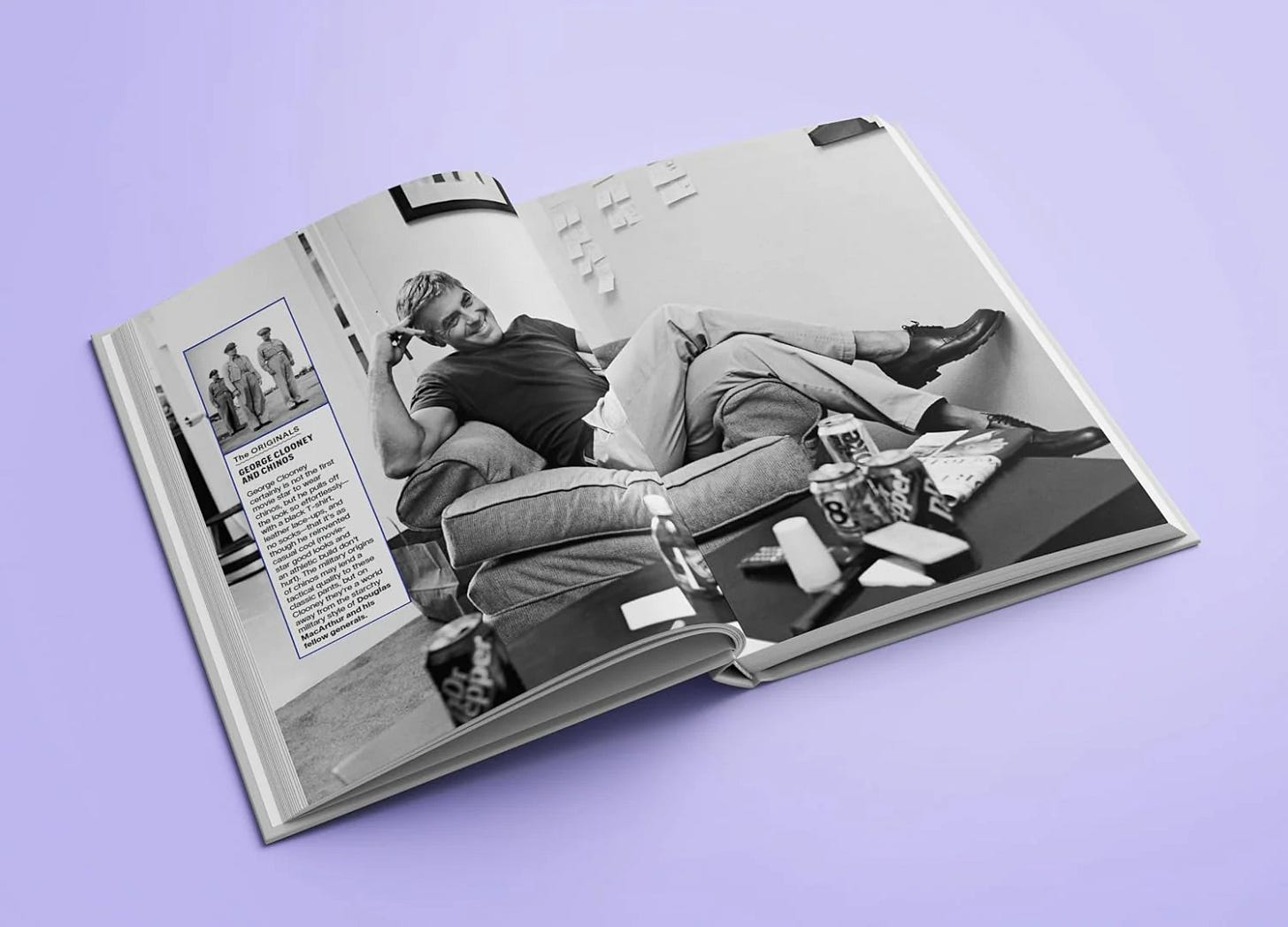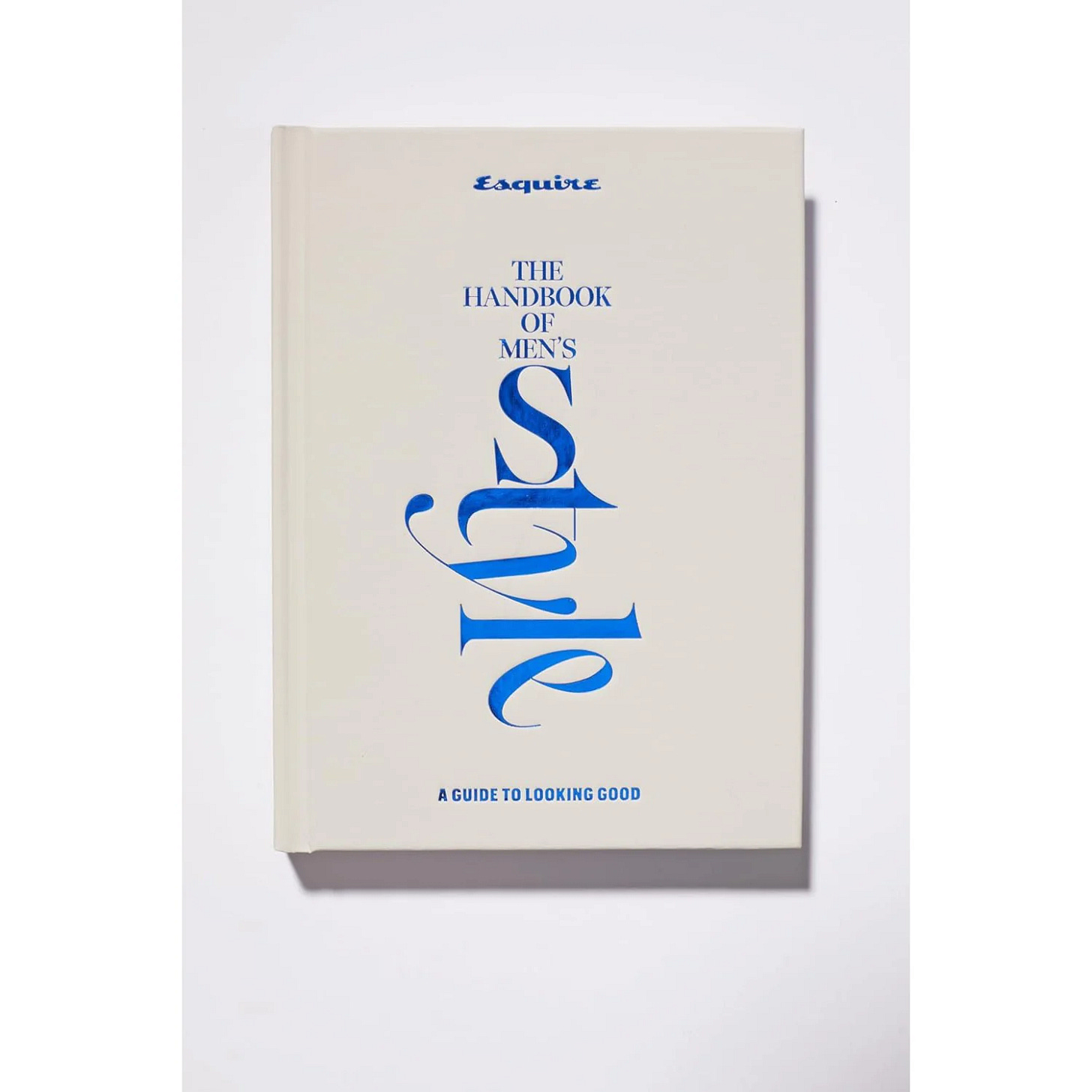Issue #50 | The New Rules of Style With Michael B. Dougherty
A Q&A with the editor of Esquire's updated 'Handbook of Men's Style'
In his first editor’s letter after taking the helm of GQ in January 2019, Will Welch fired “the opening salvo of a new era” at the men’s magazine. It would be more niche, zeroed-in on what he called “undeniable and elevated stylishness.”
More than anything, the magazine would be less prescriptive. This was a 180 degree pivot from the previous incarnation of GQ, which was intended to be a universal guide for how men should dress (and live). Looking back, it really was time for a change: men’s magazines like GQ and Esquire had helped create what now seems like a very uniform way of dressing: There was a decade where it looked as though every working age man in America was dressed by J. Crew (probably because they were).
Out were style tips and sex advice, Welch told The New York Times, in were choose-your-own-adventure mood boards. “We’re going to show different forms of self-expression… and let you find yourself in it,” he said.
It was a nice idea, but it went too far. Style became a free-for-all. Men lacked guidance. Not rules, per se, but guidelines and guardrails. Instagram filled the void, but inadequately. The blossoming of Substack menswear newsletters is evidence that there’s a demand for practical guidance that goes beyond mood boards.
When menswear writer and editor
got tapped to update Esquire’s The Handbook of Men’s Style: A Guide to Looking Good, he was put in a uniquely challenging position. How do you write about rules in an era where there aren’t many? And how do you update a style guide written in an era that was all about rules, many of which (i.e. skinny everything) seem kind of ridiculous today?The other day I sat down with Dougherty to discuss all this and more. You can get more of his writing at his own Substack, Mensweird. The interview has been edited for length and clarity.
FRONT OF BOOK: Can you start by talking about how the project came to you?
Michael B. Dougherty: Sure. Well, I’ve written for Esquire magazine for a number of years. I had a really good relationship and rapport with everybody over there. They had come to me in ‘23 with this proposal, which was that the Handbook of Men’s Style had originally been published in 2009 or 2011, which is, obviously, like, eons ago in menswear. So they came to me and said, ‘Look, this book has been in print for quite a while, and clearly needs an update. Would you take a look at it and tell us what you think?’
It was immediately clear how out of date so much of it was. Some of it was this really great, evergreen knowledge that is always transferable, always relevant. But if you go back to 2009, 2011, we’re talking like #menswear, right? So the tone of the book was very prescriptive, very rule oriented. Always this, never that. It was also very formally oriented, sometimes literally black tie. It was very much about how to dress for work, how to dress up. This was a byproduct of the Mad Men era. It was also a lot about suiting: matching your tie to your shirt, how to style your pocket square, a lot of that stuff. It had an absurd amount of French cuff references.
I went back to them and said, this needs a heavy edit. This also needs a serious updating, because a really glaring omission was a discussion of casual style. It was peppered throughout, but there really was no substantive material on casual style. We needed to invert the ratio in the book. You know, if it was 90/10 dress-to-casual, we needed to flip it to be current.
How did you approach the idea of there being rules to style in a time where there isn’t much guidance about what rules are with things like wearing a suit?
I had a lot of conversations with Jonathan Evans, the style director and Esquire, about this, because we were both on the same page that while we do live in this anything-goes, very freewheeling environment, rules are helpful in that they provide guardrails. And so you can color whatever want within the lines, but it’s always helpful to know like where the borders are.
And I think I talked about this in the casual chapter, about how rules, guidelines, they help you form a foundation, and that’s important, especially for people who are just getting into menswear, who really want to develop their style, or maybe take it in a different direction than where they’ve been. It creates a framework. It helps you from getting too schizophrenic. It’s not prescriptive, like everyone must dress this way, never dress that way. But once you establish those personal guidelines, it provides a really nice roadmap for you to experiment.
In terms of the classics, like suiting, shirts, ties, things like that, what reference points did you have? Did you go back into the archives?
We really relied on old Esquires—they have the historical position as this arbiter of men’s style. That was kind of the bones, things I didn’t need to touch. We were talking about things about how to talk to your tailor, some of this stuff doesn’t change, right? Things like a navy suit. Navy suit worked 10 years ago. It works today. It’s gonna work in 100 years too. That’s not gonna change, even if everything else does.
Were there any examples from the book 10 years ago or whatever that seem kind of absurd today, or that really stood out as being like, wow, that?
Donald Trump was an example of great hair. He had a whole spread, which I’m like, did anyone think Donald Trump had great hair? I think I swapped in JFK Jr. instead.
It must be hard to come up with rules for casual style.
If you read through the casual chapter, I don’t know if we have any rules per se. What I tried to do with that was give an overview. Again, this is a guidebook. So it’s meant to be functional. It’s meant to be for a guy who maybe isn’t as into this world as we are who is looking for a little assistance, learn some important names, important facts, tips and tricks, like that kind of stuff that they can then apply to their own lives.
There’s less about rules and more about talking about, like, what is casual today? How do we define casual today? Is it jeans with a blazer? Not really anymore. It’s gone way past that.
We did something called the casual continuum, which was essentially Justin Bieber to Michael B. Jordan. The middle point was Ryan Reynolds. If Bieber is anything goes, Michael B. Jordan is very polished, super stylish, always on point, and Ryan Reynolds is more of your everyman. It give guys a sense of a continuum. Like, Bieber is right, Reynolds is right, Jordan is right. No one’s wrong on this.
How would you describe your own personal style?
Practical, functional. Since becoming a father, I say that absurd pockets have become my style because you have to tote so much stuff. It helps to have a lot of absurd pockets. So, you know, Engineered Garments, or 18 East. As a dad, you’re constantly coming in contact with bodily fluids, so you can’t be too precious.
I want to do a rapid fire round.
Okay.
Best white T?
Favorite denim brand?
Two cats. I’m wearing them right now. Are you familiar with these guys? It’s this really small Japanese brand. The story goes that the founder wanted to create the most perfect repro of a ’50s 501 and so he literally took a sample of ’50s 501 fabric and had it analyzed to see which modern day cotton was the closest. And it turned out it was from Zimbabwe. And so he made these with Zimbabwean cotton, and all the details—it’s like cotton thread. It’s not like a nylon blend or whatever. Everything is like perfect to a ’50s 501. I just got them, and I fucking love them.
You’re going on a trip. Let's just say to Europe, for simplicity, three pairs of shoes. What would you bring?
I’m gonna bring my running shoes because I’ve been running my whole life. I’m gonna bring, these days, probably a pair of New Balance, because I’m just that dad. I’m probably gonna bring a pair of Birkenstock Arizonas, or I’ve got this pair of really funky North Face slides. They have almost a hiking boot sole, but on a slide.
Last question, I admired your watch last time we met, I remember I asked you about it. But what is it again?
This is a 1970 Omega Seamaster. Don’t ask me the reference number, because I don’t know it. I always thought I wanted a Constellation and then when it came time to buy a watch, I realized that a Constellation was little too Mad Men, like a little too mid-century. So I fell down a rabbit hole of vintage Seamasters. I love the beads of rice bracelets. It’s amazingly comfortable. I love the fact that the dial, the hands, everything is dressy but it’s not a dress watch. I love the champagne dial. I love everything about it.
Well, it’s a beautiful watch. I love it.
Thank you!
Thank you, Michael. I appreciate the conversation!
Before I go, I want to quickly plug an art show that opened yesterday at Silverlens New York. The artist, Ryan Villamael, makes these painstaking paper sculptures that are just incredible to see. The sculptures at the show are made out of old maps of the Philippines, where he’s from, cut into shapes of native plants and trees and placed in a glass case. The pieces are accompanied by actual audio of the artist as a little boy speaking to his father who was living overseas. It’s a cool show featuring a really talented artist. Check it out.
That’s all for now. Have a great weekend.
Mitch
Question? Comment? Suggestion? Caught a typo? Email me at mitch.moxley@gmail.com










Shoutout TCB jeans🙏
Hiking sole with a slide upper is key for travel. I love my KEENs for that exact reason. Nice interview.